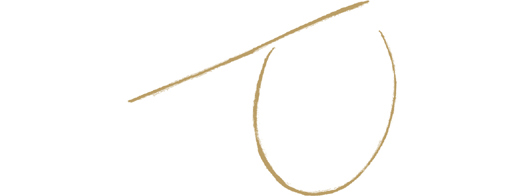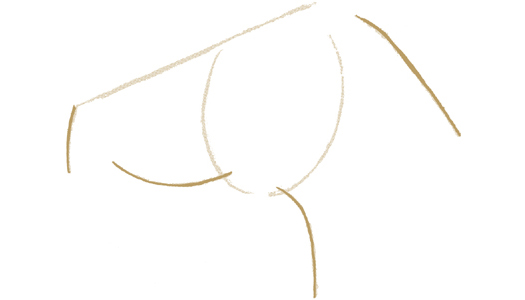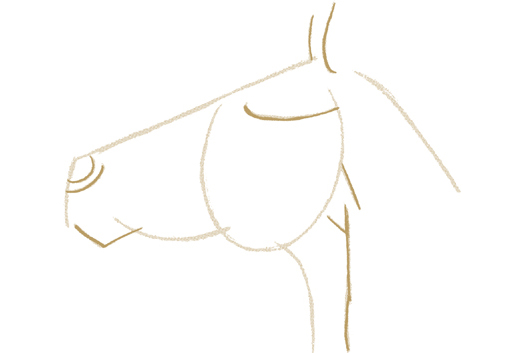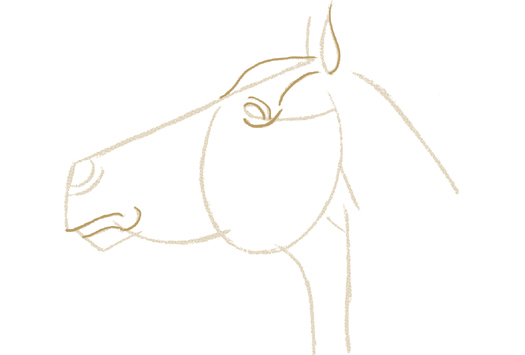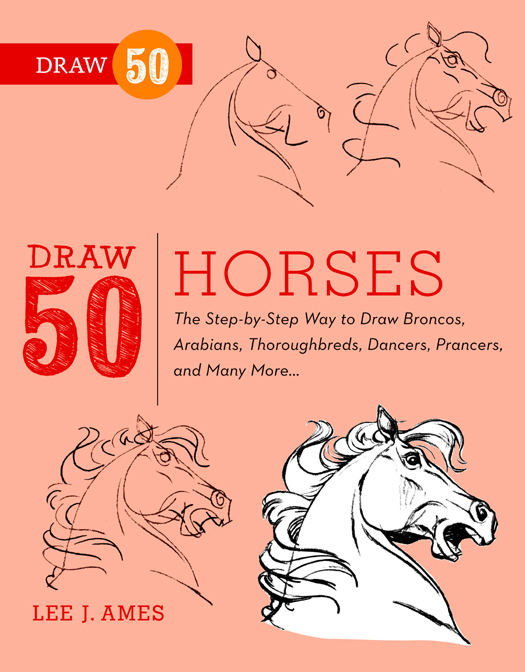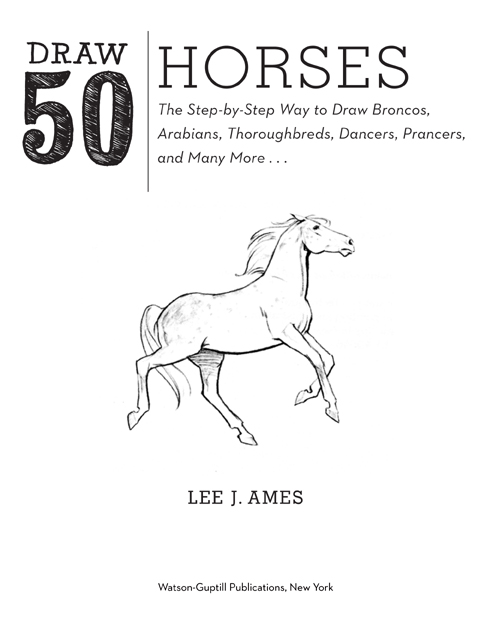OTHER BOOKS IN THIS SERIES
Draw 50 Airplanes, Aircraft, and SpacecraftDraw 50 AliensDraw 50 Animal ToonsDraw 50 AnimalsDraw 50 AthletesDraw 50 Baby AnimalsDraw 50 BeastiesDraw 50 BirdsDraw 50 Boats, Ships, Trucks, and TrainsDraw 50 Buildings and Other StructuresDraw 50 Cars, Trucks, and MotorcyclesDraw 50 CatsDraw 50 Creepy CrawliesDraw 50 Dinosaurs and Other Prehistoric AnimalsDraw 50 DogsDraw 50 Endangered AnimalsDraw 50 Famous CartoonsDraw 50 Flowers, Trees, and Other PlantsDraw 50 HorsesDraw 50 Magical CreaturesDraw 50 MonstersDraw 50 PeopleDraw 50 PrincessesDraw 50 Sharks, Whales, and Other Sea CreaturesDraw 50 VehiclesDraw the Draw 50 Way Copyright 1984 by Jocelyn S. Ames and Murray D. Zak All rights reserved.
Published in the United States by Watson-Guptill Publications, an imprint of the Crown Publishing Group, a division of Random House Inc., New York, in 2012. WATSON-GUPTILL and the WG and Horse designs are registered trademarks of Random House, Inc. Originally published in hardcover in the United States by Doubleday, a division of Random House Inc., New York, in 1984. Ames p. cm.
1. cm.
1.
Horses in artJuvenile literature. 2. DrawingTechniqueJuvenile literature. [1. Horses in art. 2.
Animal painting and illustration. 3. DrawingTechnique]. I. Title. II.
Title: Draw fifty horses. NC783.8.H65 A43 1984
743/.69725 81043646 eISBN: 978-0-307-79502-1 v3.1
Contents
To Alison, regal and elegant and thank you, Tamara Scott, for your help.
To the Reader
Broncos, Arabians, thoroughbreds, dancers and prancershere they all are. By following simple, step-by-step instructions, you can draw them. Start by gathering your equipment. You will need paper, medium and/or soft pencils, and a kneaded eraser (available at art supply stores).
You might also wish to use India ink, a fine brush or pen, or perhaps a fine pointed felt-tip or ball-point pen. Next, choose one of the horses you neednt start with the first illustration. As you begin, remember that the first few stepsthe foundation of the drawingare the most important. If they are not right, the end result will be distorted. So, follow these steps very carefully and keep your lines very light. In order that they can be clearly seen, these steps are shown darker in this book than you should draw them.
You can lighten your lines by gently pressing them with the kneaded eraser. Make sure step one is accurate before you go on to step two. To check your own accuracy, hold the work up to a mirror after a few steps. By reversing the image, the mirror gives you a new view of the drawing. If you havent done it quite right, you may notice that your drawing is out of proportion or off to one side. You can reinforce the drawing by going over the completed final step with India ink and a fine brush or pen; or with the felt-tip or ball-point.
When the ink has dried thoroughly, gently remove the pencil lines with the kneaded eraser. Dont get discouraged if, at first, you find it difficult to duplicate the shapes pictured. Just keep at it, and in no time youll be able to make the pencil go just where you wish. Drawing, like any other skill, requires patience, practice, and perseverance. Remember, this book presents only one method of drawing. In a most enjoyable way, it will help you develop a certain skill and control.
But there are many other ways of drawing to which you can apply this skill, and the more of them you explore, the more interesting your drawings will be. Lee J. Ames
To the Parent or Teacher
Drawing, like any other skill, requires practice and discipline. But this does not mean that rewards cannot be found along every step of the way. While contemporary methods of art instruction rightly emphasize freedom of expression and experimentation, they often lose sight of a very basic, traditional and valuable approach: the follow me, step by step way that I learned as a youth. Just as a beginning musician is given simple, beautiful melodies to play, so too the young artist needs to gain a sense of satisfaction and pride in his/her work as soon as possible.
The do as I do steps that I have laid out here provide the opportunity to mimic finished images, pictures the young artist is eager to draw. Mimicry is prerequisite for developing creativity. We learn the use of our tools through mimicry, and once we have those tools we are free to express ourselves in whatever fashion we choose. The use of this book will help lay a solid foundation for the child, one that can be continued with other books in the Draw 50 series, or even used to complement different approaches to drawing. Above all, the joy of making a credible, attractive image will encourage the child to continue and grow as an artist, giving him even more of a sense of pride and accomplishment when his friends say, Peter can draw a horse better than anyone else! Lee J. Ames
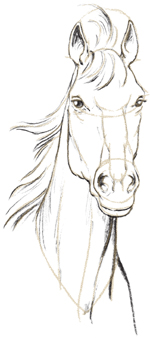
Portrait, frontal view

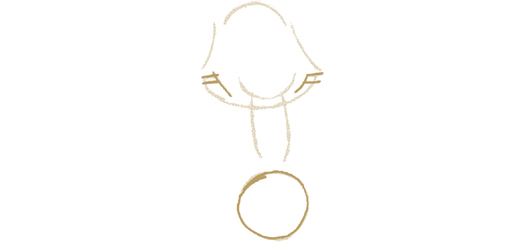
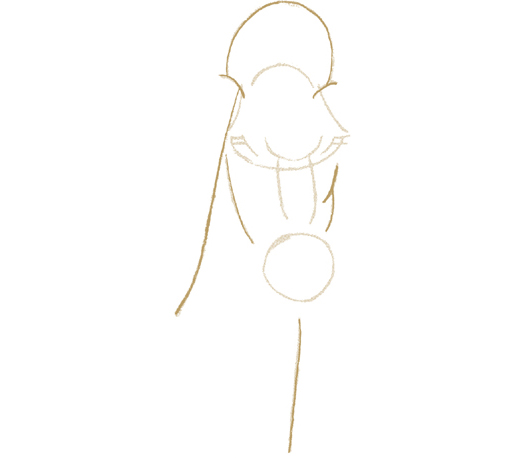
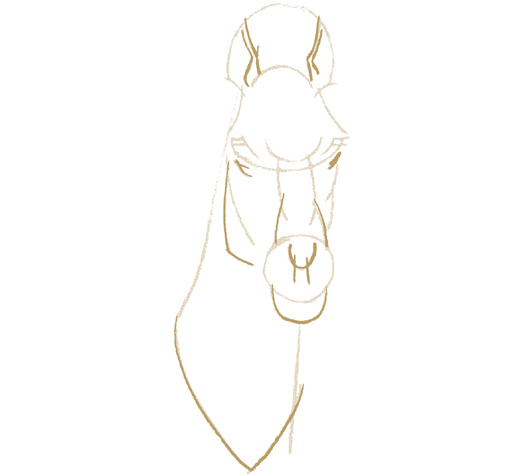
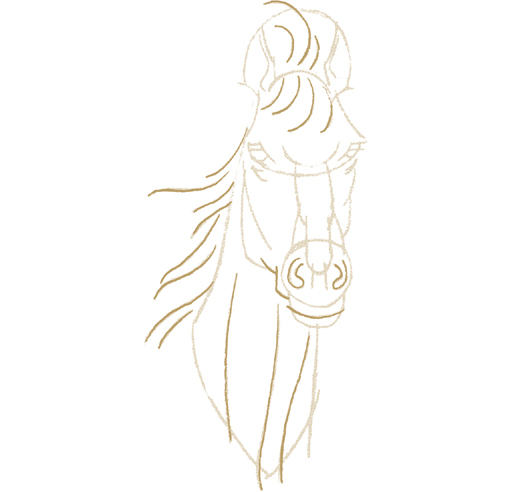
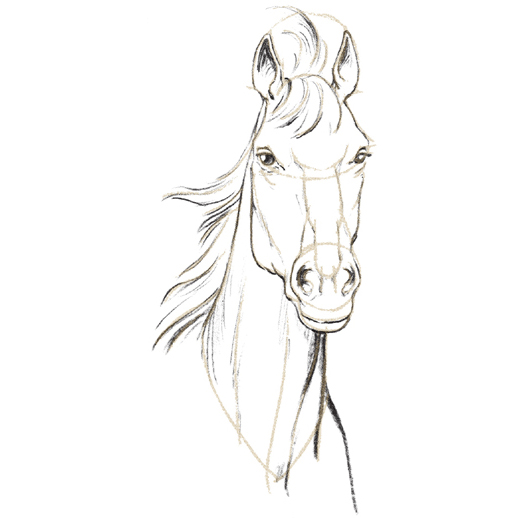
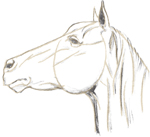
Portrait, side view
